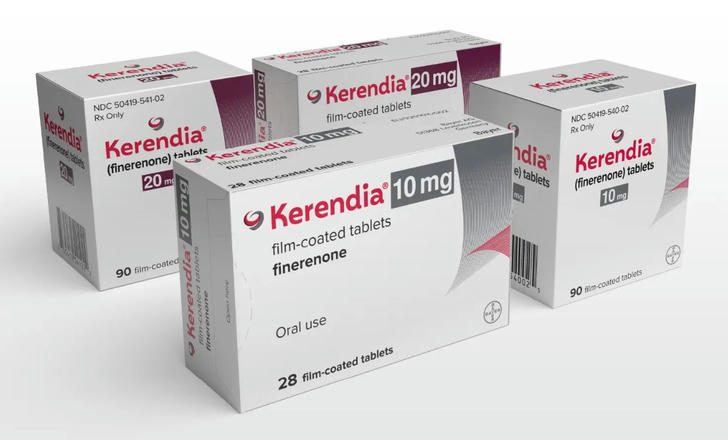Kerendia in the USA: A Practical Guide to Cost, Discounts, Dosage Pricing, and Clinical Use
The following overview outlines Kerendia’s average costs, available discounts, pricing by dosage strength, and notable advantages in clinical use.

💊 What Is Kerendia?
Kerendia belongs to a class of drugs called non-steroidal mineralocorticoid receptor antagonists. This once-daily oral treatment offers a targeted approach to reducing the risk of kidney function decline and cardiovascular complications. It works by blocking harmful hormonal pathways that contribute to kidney inflammation and fibrosis. When combined with appropriate care, it can help slow the progression of kidney disease in adults diagnosed with type 2 diabetes and related renal impairment.
💵 Kerendia Cost in the U.S.
Kerendia is available in two strengths: 10 mg and 20 mg tablets. The monthly out-of-pocket cost can vary depending on pharmacy pricing and insurance plans.
| Dosage | Quantity | Price From | Price per Unit |
|---|---|---|---|
| 10 mg | 30 tablets | $743 | $24.77 |
| 20 mg | 30 tablets | $743 | $24.77 |
| 10 mg | 90 tablets | $2,209.20 | $24.55 |
| 20 mg | 90 tablets | $2,209.20 | $24.55 |
Prices may differ slightly between regions or dispensing platforms.
💡 Available Coupons and Savings Options
Kerendia’s manufacturer offers a co-pay savings program that may significantly lower eligible patients’ out-of-pocket expenses. Some discount cards from accredited pharmacy networks may also provide reduced rates on monthly prescriptions.
• Kerendia Savings Card: Offered by the manufacturer to lower out-of-pocket costs for eligible individuals.
• GoodRx Discounts: Available at select pharmacies for both 10 mg and 20 mg tablets.
• Blink Health / WellRx: Online platforms that allow price comparison and prescription ordering, useful for those paying out of pocket.
• 90-Day Supply Options: Some pharmacies offer lower monthly rates when prescriptions are filled for three months at a time.
It is recommended to compare prices before filling a prescription to find more cost-effective options.
✅ Advantages of Kerendia
Kerendia has been evaluated in clinical studies and offers several key benefits for eligible patients:
• Targets kidney fibrosis and inflammation through selective hormone pathway blocking
• May help delay kidney function decline in patients with diabetic CKD
• Offers potential cardiovascular protection based on study results
• Taken once daily in tablet form, requiring no injection or refrigeration
• Can be used alongside standard diabetes and blood pressure medications
The treatment approach emphasizes long-term disease management rather than symptom control alone.
❓ Frequently Asked Questions (FAQ)
1. Is Kerendia covered by insurance in the U.S.?
Coverage depends on individual insurance plans. Many commercial insurers and pharmacy benefit managers include Kerendia on their formularies, though co-pay amounts and prior authorization requirements may vary.
2. Can Kerendia be taken with other diabetes medications?
Yes, Kerendia is often prescribed alongside other type 2 diabetes medications, such as SGLT2 inhibitors or metformin. Prescribing professionals typically evaluate drug interactions and kidney function before initiating combined treatment.
3. What are the common side effects of Kerendia?
The most commonly reported side effects include low potassium levels (hyperkalemia), dizziness, and changes in blood pressure. Regular blood tests are usually recommended during treatment to monitor kidney and electrolyte levels.
📌 Summary
Kerendia represents an advanced oral option for managing chronic kidney disease associated with type 2 diabetes. While pricing varies based on dosage and provider, several cost-reduction strategies—including pharmacy discounts and manufacturer programs—are available. With growing clinical interest, Kerendia continues to play a role in comprehensive treatment plans where kidney protection and cardiovascular risk reduction are prioritized.
